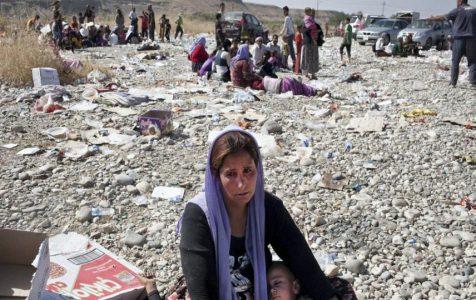
Living in the shadows: Yazidi women tells about the life under ISIS
A sense of foreboding hung in the air on the eve of one of Iraq’s greatest modern tragedies – the killing, displacing and enslaving of tens of thousands of Yazidi men, women and children by Abu Bakr Al Baghdadi’s army of terror.
Mosul had fallen in June and they knew an ISIS attack was likely. But it wasn’t until the early hours of August 3, 2014, when vigilant men gripping rusty Kalashnikovs spotted unfamiliar vehicles heading towards them through the desert, that Iraq’s Yazidis came face to face with their killers.
In one swift assault, ISIS fighters armed to the teeth attacked and seized Yazidi towns and villages in Sinjar, north Iraq, where about 500,000 members of the religious minority lived.
In the days that followed they killed thousands and enslaved an estimated 6,383 women and children, devastating and traumatising entire communities in the process. Countless families were shattered by the loss of a mother, a daughter, a sister.
As the stifling summer dragged on and the United States announced its air campaign against ISIS, the first group of reporters began to appear. By mid-August the catastrophe had created a media frenzy. Reporters from all over the world descended on the country in turmoil, slinging laptops and cameras and donning body armour.
In the years that followed, the focus fell largely on the gruesome details that emerged as more and more women were able to escape their captors and share their stories. Tales of violence, despair, starvation and rape trickled in as some editors back in the news rooms pushed for increasingly fast-paced stories and sensational details.
At a time when most were churning out hard news, one British journalist decided to slow down, take a step back and delve into the past, present and future of Iraq’s Yazidi women.
Cathy Otten’s first book, With Ash on their Faces: Yezidi women and the Islamic State, is the product of five years spent in the Kurdistan Region of Iraq and 14 months of solid reporting and writing.
Otten moved to Kurdistan in early 2013, almost 18 months before the rise of ISIS and the devastation that ensued. For months, the young freelancer lived in the safety of Sulaymaniyah, a Kurdish city of more than half a million people near the border with Iran.
Then in June 2014 Mosul fell to ISIS – Otten packed her bags and moved west to the capital of the Kurdish region, Erbil, which at the time was just 60 kilometres from the front line.
During the next four years she reported on every aspect of the war against ISIS, paying particular attention to the human tragedy. “I don’t think I’d ever encountered anything like that,” Otten says from her home in Manchester, to where she recently returned. “Everything had changed, everything had collapsed. It was a huge civilisational catastrophe.”
The book, Otten says, was inspired by a trip to Sinjar mountain in 2015 with a young Yazidi woman who was returning to her hometown for the first time since her enslavement. “She was reclaiming the mountain,” the journalist says. “The book came from this. I was so impressed with her resilience.”
With Ash on their Faces illustrates the ways in which oral folklore empowered thousands of Yazidi women living under the brutality of ISIS.
“Yazidism is an oral religion, passed down through hymns sung by specially designated singers and the playing of holy instruments,” Otten writes.
Yazidis have suffered 74 separate genocides, all of which are remembered through folklore. For centuries, tales of resistance were passed down orally from mother to daughter. Then, in 2014, these ancient methods of survival were brought back to life and employed by the captive women.
Some smeared ash on their faces in an attempt to appear less attractive to their male captors. Other women cut their daughters’ hair to make them look like boys and some even kept their children from speaking – so that they appeared to be mute to dissuade their captors from taking the youngsters away.
However, Otten points out, storytelling has its limits, and can also be limiting.
Source: National





